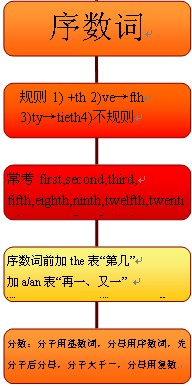任务型阅读(共10题;每小题1分,满分10分)
请认真阅读下列短文,并根据所读内容在文章后表格中的空格里填入最恰当的单词。
注意:每空格1个单词。
D. R. Gaul Middle School is in Union, Maine, a blueberry-farming town where the summer fair finds kids competing in pig scrambles and pie-eating contests.
Gaul, with about 170 seventh- and eighth-graders, has its own history of lower level academic achievement. One likely reason: Education beyond the basic requirements hasn't always been a top priority for families who've worked the same land for generations. Here, few adults have college degrees, and outsiders (teachers included) are often kept at a respectful distance.
Since 2002, Gaul's students have been divided into four classes, each of them taught almost every subject by two teachers. The goal: To find common threads across disciplines to help students create a big picture that gives fresh meaning and context to their classwork -- and sparks motivation for learning.
Working within state guidelines, each team makes its individual schedules and lesson plans, incorporating non-textbook literature, hands-on lab work and field trips. If students are covering the Civil War in social studies, they're reading The Red Badge of Courage or some other period literature in English class. In science, they study the viruses and bacteria that caused many deaths in the war.
Team teaching isn't unusual. About 77 percent of middle schools now employ some form of it, says John Lounsbury, consulting editor for the National Middle School Association. But most schools use four- or five-person teams, which Gaul tried before considering two-person teams more effective. Gaul supports the team concept by "looping" classes (跟班) so that the same two teachers stick with the same teens through seventh and eighth grades. Combining teams and looping creates an extremely strong bond between teacher and student. It also, says teacher Beth Ahlholm, "allows us to build an excellent relationship with parents."
Ahlholm and teammate Madelon Kelly are fully aware how many glazed looks they see in the classroom, but they know 72 percent of their eighth-graders met Maine's reading standard last year -- double the statewide average. Only 31 percent met the math standard, still better than the state average (21 percent). Their students also beat the state average in writing and science. And in2006, Gaul was one of 47 schools in the state to see testing gains of at least 20 percent in four of the previous five years, coinciding roughly with team teaching's arrival.
A Classroom With Context
|
Problems of the
school
| Being a farming town, it (1) little in education before.
|
(2) education is considered less important.
|
The community is relatively (3) ____ rather than open to the outsiders.
|
Ways of solving
the problems
| The division of classes is made and students are well (4) ____.
|
Individual schedules and lesson plans are (5) ____ by each team.
|
|
本试题 “任务型阅读(共10题;每小题1分,满分10分)请认真阅读下列短文,并根据所读内容在文章后表格中的空格里填入最恰当的单词。注意:每空格1个单词。D. R. Gaul Mi...” 主要考查您对 序数词 等考点的理解。关于这些考点您可以点击下面的选项卡查看详细档案。
序数词的概念:
表示顺序的数称为序数词。如:first, second, third, fourth。 序数词的构成与用法:
1、序数词的构成:
①一般来说,是由相应的基数词加词尾th构成。
例:four+th→fourth
six+th→sixth
seven+th→seventh
ten+th→tenth
②下面这些基数词在变为序数词时,有特殊的变化。
例:one→first
two→second
three→third
five→fifth
eight→eighth
nine→ninth
twelve→twelfth
③十位整数序数词的构成方法是将基数词的词y变成i,然后再加eth。
例:twenty→twentieth
thirty→thirtieth
forty→fortieth
ninety→ninetieth
④两位或两位以上的基数词变成序数词时,仅将个位数变成序数词。
例:twenty-one→twenty-first
thirty-five→thirty-fifth
a hundred and fifty-three→a hundred and fifty-third
2、序数词的用法:
①序数词在使用时,一般加上定冠词。
例:the first book
the second floor
the third day
the fourth week.
②序数词在多数情况下都用作定语,有的也可以作表语、主语和宾语。
例:The may1st is Labour Day. 五月一日是劳动节。
My room is on the second floor. 我的房间在二楼。
The first is larger than the secon.(主语)第一个比第二个大。
Read the book from the first.(宾语)从开头读这本书。
You'll be the sixth to write.(表语)你将是第六个写的。
③序数词的前面可以加上不定冠词,用来表示“再一”,“又一”的意思。
例:You may have a third try. 你可以第三次尝试。 序数词知识体系:

约数的表达方法:
用tens/dozens/scores/hundreds/thousands/millions of 表示“几十、几百、上千、成千上万”等。
如:The boy bought dozens of pencils.
Thousands of people died in the earthquake.
注意: (A):dozen, score, hundred, thousand, million等表示确切数量时,不用复数。
如:five dozen (of) eggs 五打鸡蛋
hree hundred people 三百个人
分数词的构成和用法:
1)分数词构成法:
分数词(FractionalNumerals)由基数词和序数词构成,基数词代表分子,序数词代表分母。除了分子为1的情况下,序数词都要用复数形式:
如:1/4:one-fourth
5/9:five-ninths
2/3:two-thirds
17/5:three and two-fifths
7/12:seven-twelfths
379/8:forty-seven and three-eighths
此外还有下面表示法:
如:1/2:a(one) half
1/4:a(one) quarter
3/4:three-quarters
9/4:two and a quarter
3/2:one and half
31/4:seven and three quarters
与“任务型阅读(共10题;每小题1分,满分10分)请认真阅读下列短文...”考查相似的试题有:
|